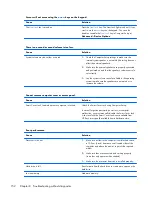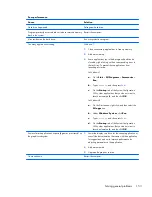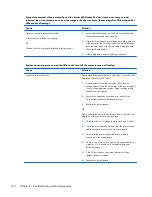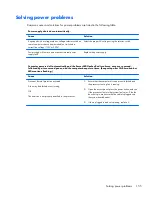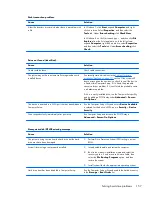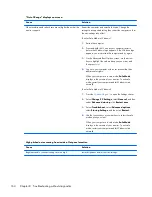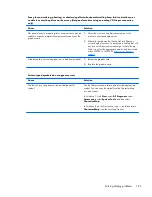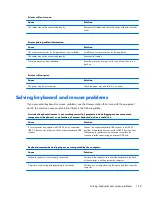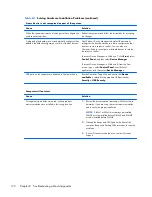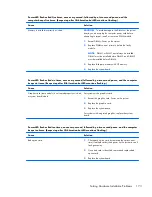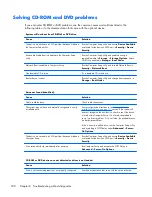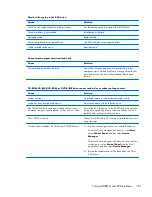
Solving audio problems
If the computer has audio features and you encounter audio problems, see the common causes and
solutions listed in the following table.
Sound cuts in and out.
Cause
Solution
Processor resources are being used by other open
applications.
Shut down all open processor-intensive applications.
Sound does not come out of the speaker or headphones.
Cause
Solution
Software volume control is turned down or muted.
Double-click the
Speaker
icon on the taskbar, then make
sure that
Mute
is not selected and use the volume slider to
adjust the volume.
NOTE:
In Windows 8, the taskbar is available at the bottom
of the Desktop screen.
Audio is hidden in Computer Setup.
Enable the audio in Computer Setup:
Security
>
Device Security
>
System Audio
.
The external speakers are not turned on.
Turn on the external speakers.
The audio device may be connected to the wrong jack.
Ensure that the device is connected to the correct jack on the
computer. The rear audio jack output is the green receptacle.
The speakers should be plugged into the line-out jack and the
headphones should be plugged into the headphone jack.
External speakers plugged into the wrong audio jack on a
recently installed sound card.
See the sound card documentation for proper speaker
connection. The rear audio jack output is the green
receptacle.
Headphones or devices connected to the line-out connector
mute the internal speaker.
Turn on and use headphones or external speakers, if
connected, or disconnect headphones or external speakers.
Computer is in Sleep state.
Press the power button to resume from Sleep state.
CAUTION:
When attempting to resume from Sleep state,
do not hold down the power button for more than four
seconds. Otherwise, the computer will shut down and you will
lose any unsaved data.
Internal speaker is disabled in Computer Setup.
Enable the internal speaker in Computer Setup. Select
Advanced
>
Device Options
>
Internal Speaker
.
166
Chapter 8 Troubleshooting without diagnostics

